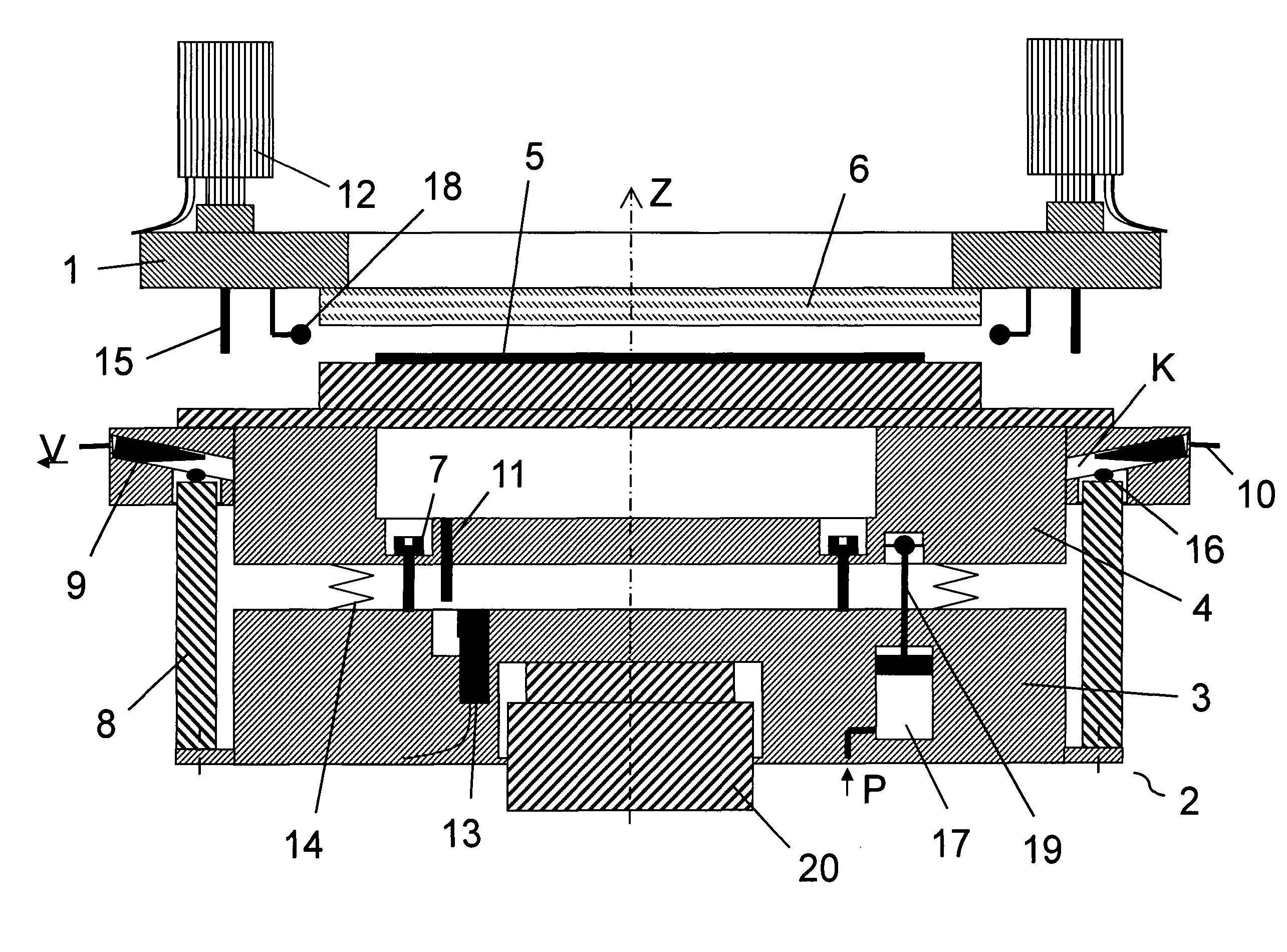Method and device for active wedge error compensation between two objects that can be positioned substantially to parallel to each other
a wedge error compensation and wedge technology, applied in auxillary shaping apparatus, instruments, nanotechnology, etc., can solve the problems of small control displacement, small brake force, and no longer uniform imprinting of structures on the substra
- Summary
- Abstract
- Description
- Claims
- Application Information
AI Technical Summary
Benefits of technology
Problems solved by technology
Method used
Image
Examples
Embodiment Construction
[0025]FIG. 1 shows a sectional view of a device for active wedge error compensation. The device is suitable for imprinting structures into a substrate 5. The device comprises the wedge error compensating head 2 according to the invention and a holder 1 to which a mask (or punch) 6 is fixed for imprinting the structures into the substrate 5.
[0026]The wedge error compensating head 2 comprises a movable part 4 and a stationary part 3. Pressure springs 14 are provided between the movable part 4 and the stationary part 3. By using a hydraulically or pneumatically operating means 17, the movable part 4 and the non-movable part 3 can be moved towards each other in that a piston 19, which is fixed to the movable part 4, is moved towards the stationary part 3 by a negative pressure in the means 17 located in the stationary part 3. By means of the brakes 7, the movable part 4 can be locked relative to the stationary part 3. The substrate 5 to be treated is applied to the free surface of the w...
PUM
| Property | Measurement | Unit |
|---|---|---|
| force | aaaaa | aaaaa |
| displacements | aaaaa | aaaaa |
| relative displacement | aaaaa | aaaaa |
Abstract
Description
Claims
Application Information
 Login to View More
Login to View More - R&D
- Intellectual Property
- Life Sciences
- Materials
- Tech Scout
- Unparalleled Data Quality
- Higher Quality Content
- 60% Fewer Hallucinations
Browse by: Latest US Patents, China's latest patents, Technical Efficacy Thesaurus, Application Domain, Technology Topic, Popular Technical Reports.
© 2025 PatSnap. All rights reserved.Legal|Privacy policy|Modern Slavery Act Transparency Statement|Sitemap|About US| Contact US: help@patsnap.com



